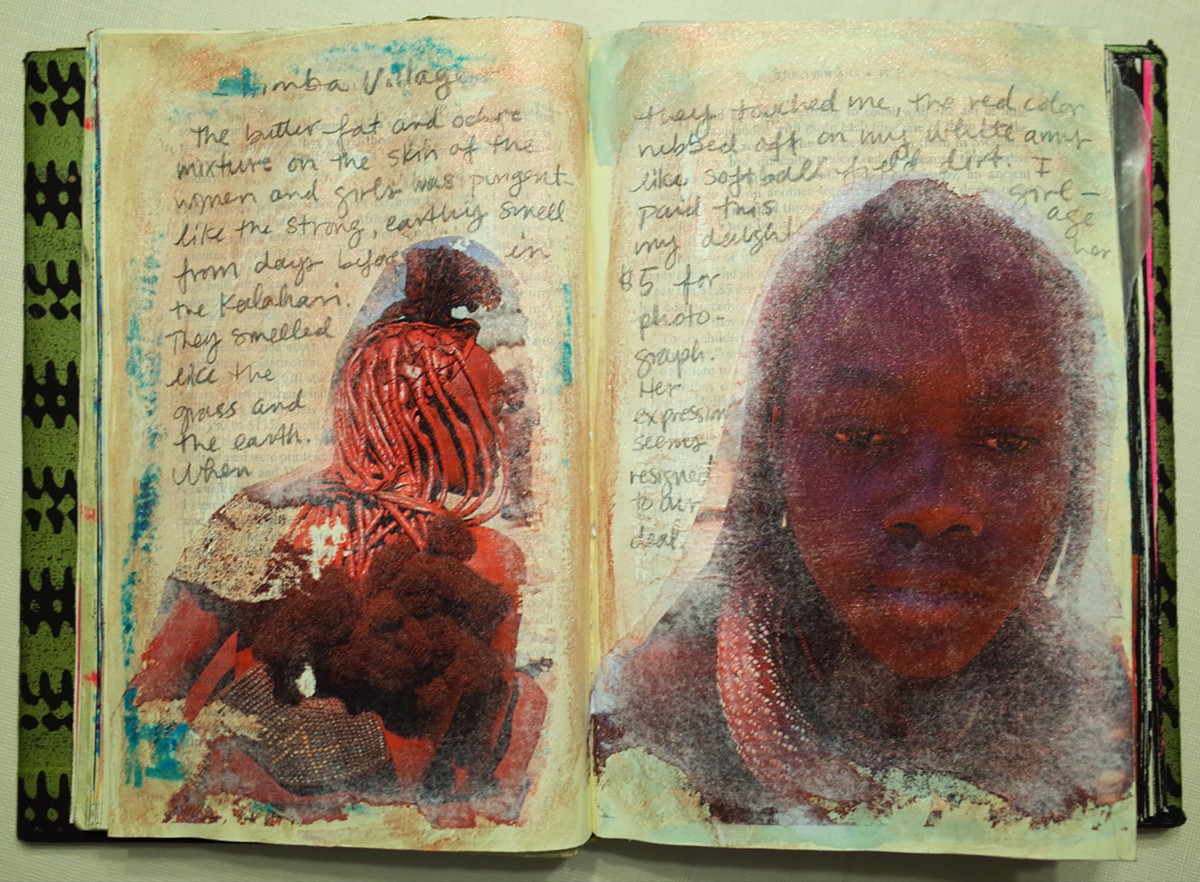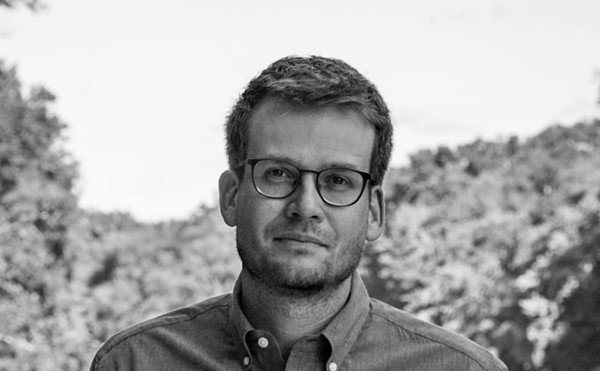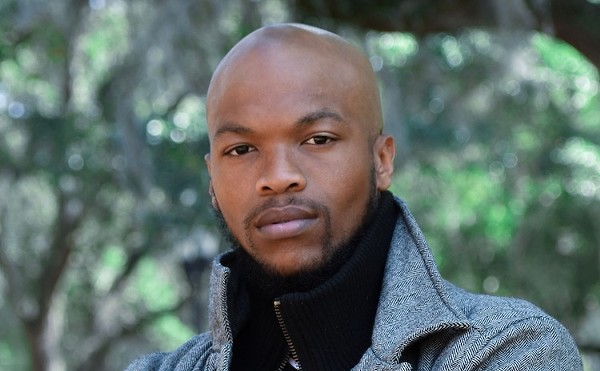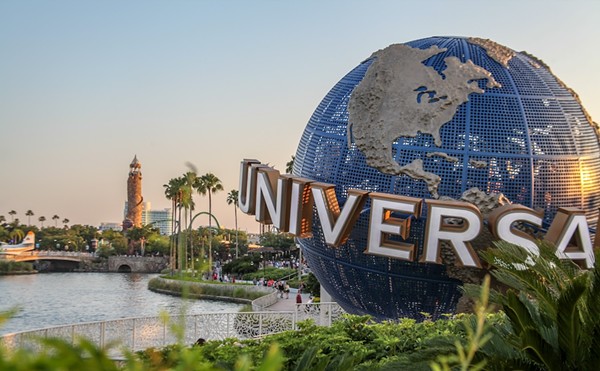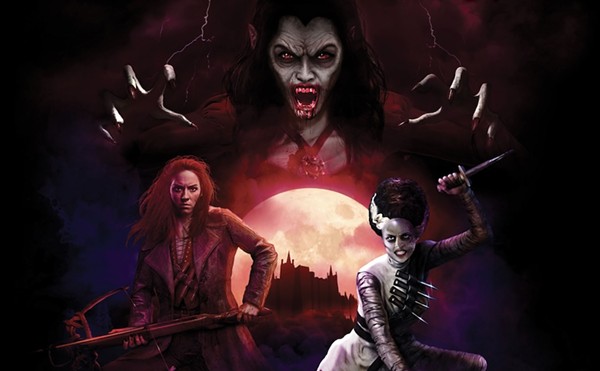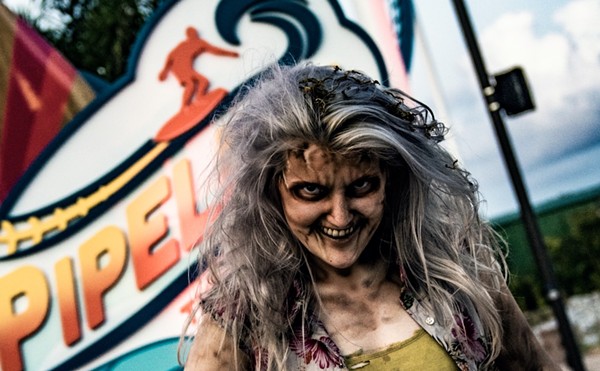Multidisciplinary visual artist Rachel Simmons teaches printmaking, book arts and environmental art courses at Rollins College. Simmons has traveled extensively abroad, seeking to learn how other countries are addressing our shared ecological challenges.
In Iceland, she was fascinated with the country's dedication to renewable energy and how it is reshaping the landscape. She created a series of works on paper in collaboration with her colleague Lee Lines in 2013, The Aesthetics of Scale: Icelandic Landscapes and Beyond, transferring Lines' photographs to etchings and further embellishing them with hand-drawn detail.
In Namibia, which she visited this past May, her attention was drawn to the country's booming ecotourism industry. She noted that Namibia aggressively cultivates its image as an "eco-destination" – a place of harmony that celebrates its flora and fauna and the tribes living on the land. When she arrived in the country, she realized that this image is a publicity construct reminiscent of a Benetton ad, a Hallmark card of artificial harmony. In her most recent work, Simmons creates a forceful visual representation of Namibia's current discontent amid its desire to present a unified national identity.
Namibia has been independent since 1990 and is struggling to forge its own identity. Beyond the obvious conflicts between rich and poor, global and local, traditional and contemporary, Simmons observed the country's "new nationalism" vis-a-vis its continuing dependence on the values of its European colonizers. Simmons saw advertising that featured a Namibian woman wearing a leather skirt while shopping for ketchup, side by side with women of the Bushmen tribe wearing traditional "topless" costume. This troubling juxtaposition was emblematic of the generally confused representation of the Namibian identity, its striving toward independence coupled with a need to appeal to Western economic power. These mixed messages distressed Simmons and prompted her to document the conflict.
Simmons used pages of The Africans (a book by David Lamb written in 1982) as raw material for an art book, The Namibians, an artifact that captures her complex reflections on Namibian culture, landscape and infrastructure. Lamb's combination of analysis and adventure reflected her own approach: a deep fascination with the African continent, an ambition to learn about its history, and a reluctance to be judgmental.
"I knew that I could only see Namibia's present from my perspective as a woman artist and academic," Simmons says.
She blacked out many of the pages, leaving only random words and sentences of the original text visible. On one page, she inscribed "SWAPO 1990," an homage to the South West Africa People's Organization (the guerrilla organization that fought white rule and has been the elected government since independence in 1990), at the confluence of radiating black and gold stripes.
On another, she placed a photo of a bare-breasted Bushmen woman tinted an industrial pink, a reference to a practice of the Himba tribe, who apply reddish pigments to their bodies to highlight their gender. Her body stands out against the black background, a ripe icon of colonial sexual and racial fantasies. Facing that image, Simmons wrote in chalk-on-blackboard style: "Nationhood is difficult – it means bridging tribal customs, languages and lands," while the words "caste," "system," "tribal" and "affiliations" are arbitrarily distributed around the page in bold sans-serif type. On the same page she writes: "The language of business is English, but what if you have no business," expressing her concern with the country's lack of economic independence.
Simmons' Namibian art book is another powerful example of her ongoing concern with the specter of climate change. Previously, she addressed that issue in a comic book, Future Bear: Past Perfect (in collaboration with her colleague Julian Chambliss), envisioning the fate of a time-traveling polar bear at the advent of global warming. For Simmons, the artist's book is a flexible medium that allows her wide latitude. Simmons is a dedicated artist, scholar and thinker, and an important member of Orlando's growing artists community.
Face to Face: Artists Florida is a semi-regular series profiling the artists who weave the cultural tapestry of Central Florida.

Stunning images from Rachel Simmons’ art book, The Namibians, and photos from the trip that inspired the work

